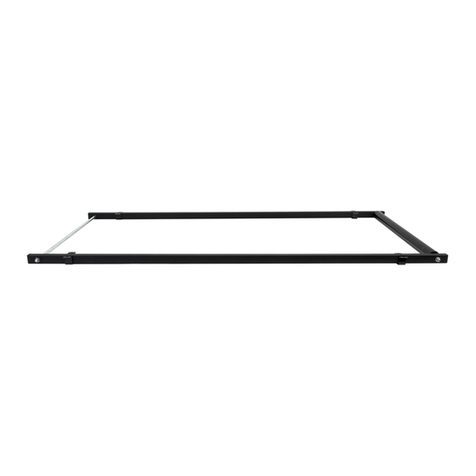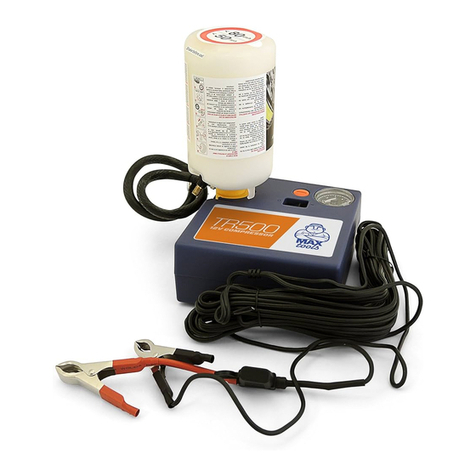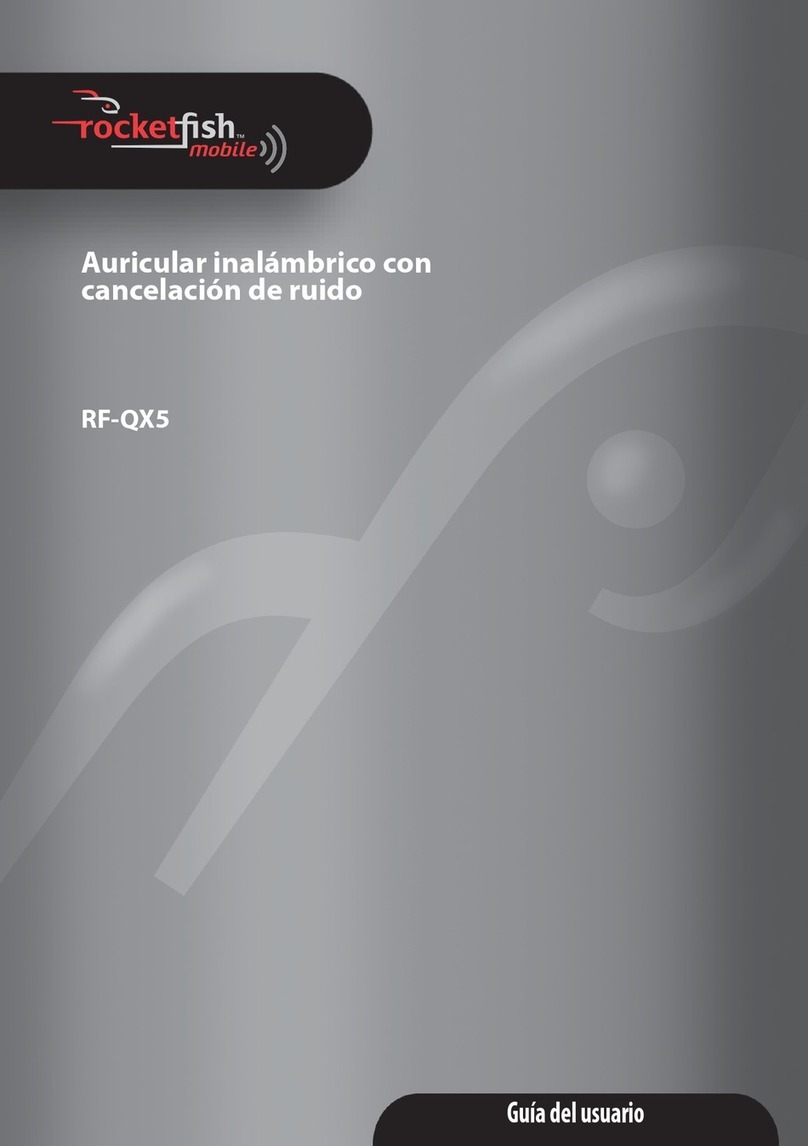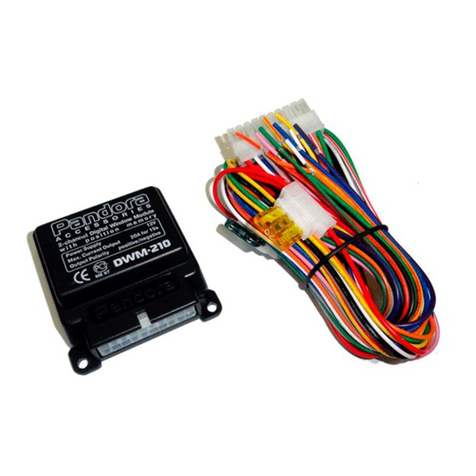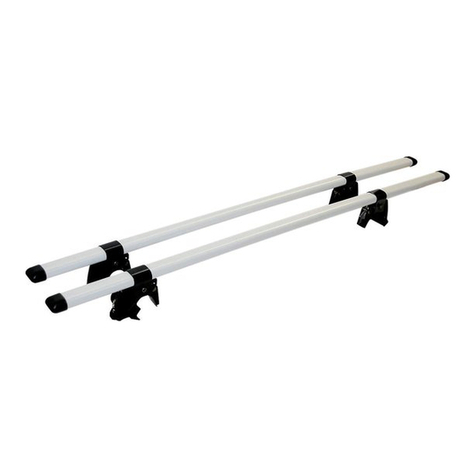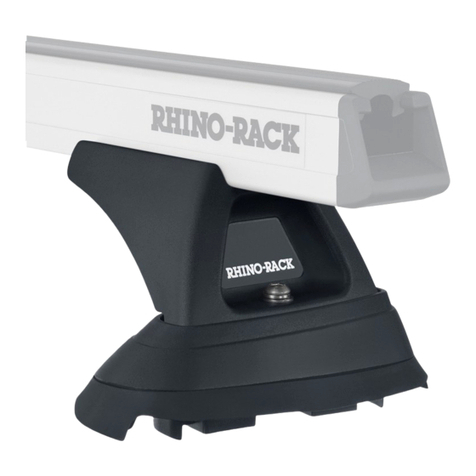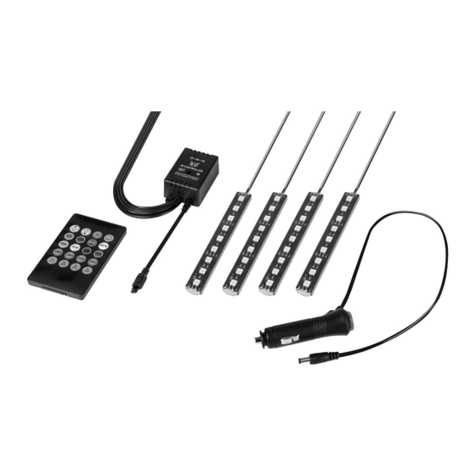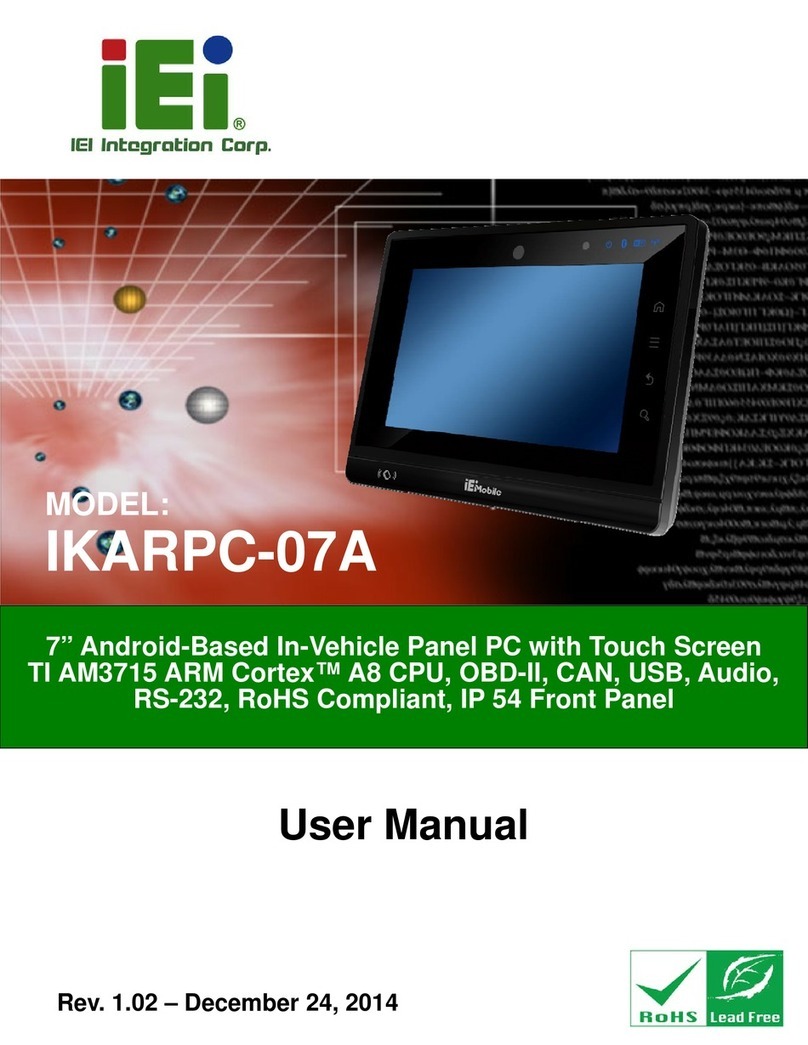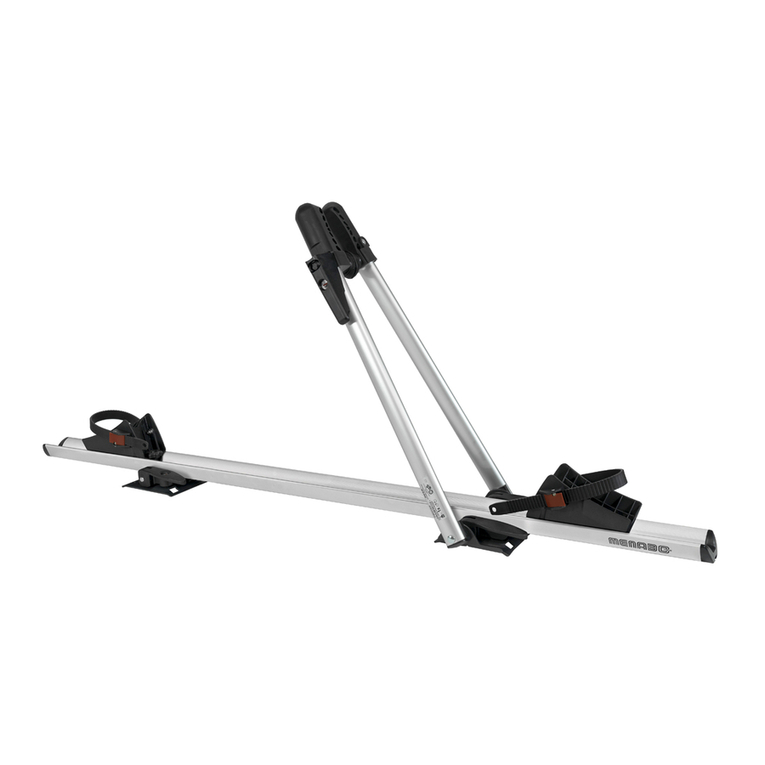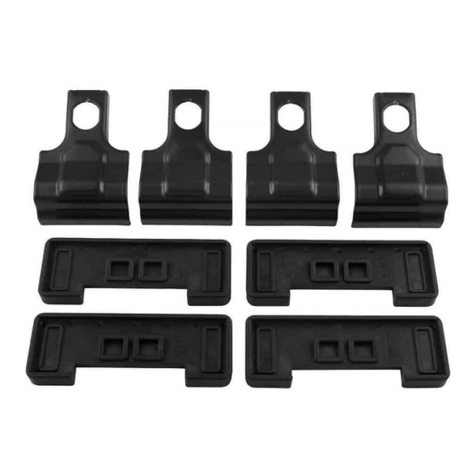Nedap LEGIC Booster User manual

www.nedapidentification.com
installation guide
LEGIC Booster
LEGIC Booster 2G
LEGIC Booster Ultimate
2020-09-01 | v4.8 | Doc. no. 5285402
LEGIC Boosters

LEGIC Boosters | installation guide
2/
18
Copyright
Copyright © Nedap N.V. All rights reserved. The information in this document is subject to change without notice, it is
not to be reproduced in any way, in whole or in part, without the written consent of Nedap N.V. All trademarks
referenced belong to their respective owners
Disclaimer
Nedap N.V. has made every effort to ensure the accuracy of the information contained in this document. However,
Nedap N.V. makes no representations or warranties whatsoever whether express or implied as to the accuracy,
correctness, completeness or fit-for-purpose or suitability for the purpose of this product. You use the products at your
own risk. Nedap N.V. excludes any liability to the maximum extent permitted by applicable law for the damages caused
by errors or failures made during the installation or improper use of this product or by not applying the instructions
stated in this document.
Nedap N.V. reserves the right to make improvements or amendments to this document and/or the products described
therein at any time without any notification. The latest version of this document can be found on our partner portal
https://portal.nedapidentification.com. Please download the latest version of this document and keep a copy for your
own records.
This document can be published in various languages but only the English language version will prevail. Nedap N.V.
assumes no responsibility for any errors caused for the translations into another language.
Warranty and spare parts
Please consult the Nedap products dealer from whom you purchased this product, in regards to the applicable warranty
conditions. This product cannot be used for any other purpose as described in this document. If the product is not
installed according to this document; the warranty provided is not applicable. At the sole discretion of Nedap N.V.,
Nedap N.V. may decide to change the conditions of the warranty policy. You agree that Nedap N.V. is able to
compensate you the pro-rata value of the warranty involved rather than replacing or repairing the product depending
on the technical or economical value of the product.
Prior to applying the warranty, please verify if you comply with the warranty conditions of the warranty policy, whether
you can successfully apply for the replacement or repair of a defective part. Parts can only be replaced with original
Nedap parts, otherwise the warranty policy will not be applicable on the product. If the warranty is applicable, please
contact the dealer or send the defective parts to the dealer.
Additional information
For any information or questions regarding the product, please contact your own dealer.
Nedap N.V.
Identification Systems
Parallelweg 2
7141 DC Groenlo
The Netherlands
+31 (0)544 471 111
info@nedapidentification.com
www.nedapidentification.com

LEGIC Boosters | installation guide
3/
18
Contents
1Introduction ........................................................................................................................................................................ 4
2Installation .......................................................................................................................................................................... 5
2.1 Dimensions............................................................................................................................................................... 5
2.2 Temperature considerations................................................................................................................................... 6
2.3 Solar control windshields ........................................................................................................................................ 6
3Configuration....................................................................................................................................................................... 7
3.1 Configuration card set ............................................................................................................................................. 7
3.2 Configuration procedure.......................................................................................................................................... 7
3.3 Configuration software ............................................................................................................................................ 8
3.3.1 Create a configuration card................................................................................................................................. 8
3.3.2 Example configuration ...................................................................................................................................... 11
3.3.3 Booster config files............................................................................................................................................ 11
3.4 Testing the configuration....................................................................................................................................... 12
3.4.1 Start testing ....................................................................................................................................................... 12
4Usage information............................................................................................................................................................. 13
4.1 Using the LEGIC Booster ....................................................................................................................................... 13
4.2 Reading the LEGIC Booster ................................................................................................................................... 13
5Buzzer indications............................................................................................................................................................. 14
6Battery replacement......................................................................................................................................................... 15
ATechnical specifications ................................................................................................................................................... 16
BDisposal of equipment...................................................................................................................................................... 16
CCE declaration ................................................................................................................................................................... 16
DFCC / ISED declaration ..................................................................................................................................................... 17
EDocument revision............................................................................................................................................................ 18

LEGIC Boosters | installation guide
4/
18
1Introduction
The LEGIC Booster is an active dual ID tag enabling simultaneous identification of the inserted LEGIC smart card and
the embedded vehicle ID resulting in rapid driver and vehicle monitoring.
A LEGIC smart card can be placed in the device (representing driver ID). Additionally a separate ID is programmed in
the LEGIC Booster (representing vehicle ID). Once configured, the LEGIC Booster allows a driver ID badge together with
its embedded vehicle ID to be read from a distance up to 10 meters (33 feet) in combination with NEDAP TRANSIT
readers. This solution substantially enhances the level of security when controlling activities of vehicles that are
regularly used by different drivers. Additionally a fully integrated vehicle and personnel access solution can be
implemented. The LEGIC Booster Ultimate further enhances the level of security with additional communication by
checking the LEGIC Booster Ultimate authenticity.
For more details about the NEDAP TRANSIT reader refer to the TRANSIT installation guide.
The combined vehicle and driver identification is a unique NEDAP patented feature. Optionally the vehicle-ID can be
omitted if more information from the LEGIC card is required.
The LEGIC Booster supports LEGIC Advant and Prime cards.
NEDAP can also supply Booster devices that are able to read NEDAP, EM4200, HID-Prox or MIFARE/DESFIRE cards.
The LEGIC Booster was developed based upon the unique patent of the Nedap dual band technology. This technology
enables reading of the low frequency credit card sized tag by the TRANSIT microwave reader. The microwave
technology in the 2.45GHz band allows identification at a distance up to 10 meters, even at high speeding passage.
The LEGIC Booster Ultimate has an extra 433MHz band for a triple band technology for extra LEGIC Booster Ultimate
authentication.
Key features:
•Combined vehicle and driver identification
•Easy interior mounting
•Push button activation
•Expected lifetime up to 5 years.
•Replaceable batteries (2 x AAA)
•LEGIC Booster secure authentication (LEGIC Booster Ultimate only)

LEGIC Boosters | installation guide
5/
18
2Installation
2.1 Dimensions
The LEGIC Booster is easily mounted on the interior of the car’s windshield by means of suction cups. Users should
ensure the visual contact between the LEGIC Booster and any TRANSIT reader is unobstructed with items such as
stickers or metalized windshields (see also chapter 2.3 about solar control windshields).
Note: The suction cups must be faced toward the reader to achieve maximum reading distance.
Dimension
mm
inches
Length
111
4.37"
Width
65
2.56"
Height
32
1.26"
Height (without section cups)
24
0.95"
Figure 1: LEGIC Booster 2G and LEGIC Booster Ultimate dimensions
Dimension
mm
inches
Length
116
4.57"
Width
72
2.83"
Height
31
1.22"
Height (without section cups)
26
1.02"
Figure 2: LEGIC Booster dimensions

LEGIC Boosters | installation guide
6/
18
2.2 Temperature considerations
The LEGIC Booster is designed to operate within the extreme temperature ranges, which often occur behind a vehicle’s
windshield during the winter or summer seasons (-20°C to +85°C). However the LEGIC card inserted in the LEGIC
Booster may not be designed to withstand such temperatures and could suffer damage as a result. Nedap advises to
remove the LEGIC card when not in use.
Caution: Do not leave card in access device when leaving the vehicle, as this presents a security risk.
Caution: Do not leave card in access device for long periods of time in extreme heat, as this may damage the card.
2.3 Solar control windshields
From 1997 onwards several car manufacturers introduced vehicles with solar control windshields. The solar control
windshields are equipped with a metalized coating, which can block the TRANSIT signal from the LEGIC Booster
mounted on the inside of the windshield of the vehicle.
Most of these windshields have a metal free zone where transponders can be mounted. The metal free zone of
metalized windshields is most often found in the middle of the windshield behind and slightly below the rear view
mirror. In vehicles manufactured after 1998 the metal free zone should be indicated on the window.
We advise the owner to contact the local car dealer if it is not clear where the aperture is exactly positioned in a certain
vehicle and where the LEGIC Booster should be mounted.

LEGIC Boosters | installation guide
7/
18
3Configuration
The LEGIC Booster is configured by means of configuration cards. This configuration card is a LEGIC Advant
transponder that contains all the information that is required to find the user's segment and read the data. The LEGIC
Booster only accepts a configuration card after configuration is enabled with a master token card.
A newly purchased LEGIC Booster will accept any master token card. Once a master token has been inserted, the
LEGIC Booster will only accept that specific master token and cannot be reconfigured with other master tokens.
3.1 Configuration card set
The configuration card set contains 3 cards that have the exact same stamp.
•The master token IAM n/31 enables the programmer to write the configuration card.
•The master token SAM n/31 enables the LEGIC Booster to accept the configuration card.
•The configuration card.
Note: Previously the set contained only 2 cards (no SAM n/31 card included).
The IAM n/31 card was accepted on the LEGIC Booster as well as on the programmer
A special master token SAM n/32 can be used to perform a 'master token withdraw'. This will release the bonded
master token information and enables the Booster to accept any master token again (just like a virgin LEGIC Booster
from the factory). The 'withdraw' master token should have the exact same stamp as the original master token. The
SAM n/32 card is not included in the master token set.
3.2 Configuration procedure
Follow the procedure below to configure the LEGIC Booster for your application.
1. Insert the master token SAM card in the LEGIC Booster and push the button.
The LEGIC Booster sounds the buzzer with an increasing frequency: ♪♪♪
The LEGIC Booster will now accept your configuration data card.
2. Insert the configuration data card in the LEGIC Booster and push the button.
The LEGIC Booster sounds the buzzer with a decreasing frequency ♪♪♪
The configuration is accepted.
Now your LEGIC Booster will read the LEGIC smart cards that meet the conditions defined in your configuration.

LEGIC Boosters | installation guide
8/
18
3.3 Configuration software
NEDAP has developed a software application that allows system integrators to create configuration cards. This
software can be downloaded from our partner portal website https://portal.nedapidentification.com.
A LEGIC Advant programmer based upon LEGIC SC-2560 or SM-4500 chipset is required.
For example: KABA B-Net 9107 or KABA B-Net 9108.
Figure 3: LEGIC Booster configuration software
3.3.1 Create a configuration card
The configuration card contains the information which user cards are supported and which data on these cards must be
read. Follow the procedure below to create a configuration card.
1. Specify the OPTIONS
2. Specify the SEARCH DEFINITIONS
3. Specify the DATA DEFINITIONS
4. Load the Master Token IAM.
Place the master token IAM card on the programmer and click 'Authorization', 'Add'.
The message 'Authorization accepted' should appear.
5. Write the configuration into a transponder.
Place the configuration card on the programmer and click 'Configuration', 'Write TXP'.
The message 'Configuration data written' should appear.
The configuration can be saved in a bcf-file.

LEGIC Boosters | installation guide
9/
18
Operating mode
Operating modes:
Dual-ID (Vehicle-ID + Driver-ID) Driver-ID max. 40 bits (=5 bytes) from LEGIC smart card.
Single-ID (only Driver-ID) Driver-ID max. 80 (=10 bytes) bits from LEGIC smart card.
Extended Driver-ID operating modes:
Dual-ID (Vehicle-ID + Driver-ID) Driver-ID max. 88 bits (=11 bytes) from LEGIC smart card.
Single-ID (only Driver-ID) Driver-ID max. 128 bits (=16 bytes) from LEGIC smart card.
RFID Options
Enable ISO15693 Enables reading LEGIC Advant / ISO15693 cards.
Enable ISO14443A Enables reading ISO14443A cards.
Enable LEGIC prime Enables reading LEGIC Prime cards.
Enable Inside Contactless Enables reading Inside Contactless cards (UID only).
Enable FeliCa * Enables reading Sony Felica cards (UID only).
Enable ISO14443B * Enables reading ISO14443B cards.
* Requires LEGIC Booster 2G or LEGIC Booster Ultimate
Search definitions
Specify what to search for on the LEGIC card. Up to 3 search definitions can be specified. If no match is found on search
definition 1, then it will search for the second.
Search enable Search enable:
+ Disabled
+ No authentication
+ With segment search
Segment number Start segment number for searching with segment search stamp.
First segment is segment number 1.
Segment type Segment type to be read.
+ Any segment type
+ Data segment
+ Access segment
Segment stamp search Search string to search a segment with a specific stamp.
Stamp length (prime only) Stamp length for access to LEGIC prime transponders. This parameter is
not used with LEGIC Advant transponders.
Data definitions
Specify which data to read. Up to 3 data definitions can be defined (A, B and C). These data definitions can be allocated
to one or more search definitions.
Please make sure that the total length of the data does not exceed the maximum (depending upon the operating mode
selected in Options). The total data length is determined by the data type, data length, constant data for all allocated
data definitions. When the data length for the search definition exceeds the maximum the data will be truncated.
Allocation of data to search definition Allocate the data definition to one or more search definitions. It is also
possible to have more than one data definition allocated to the same
search definition.

LEGIC Boosters | installation guide
10/
18
Data type Type of transponder data to be read.
+ Unique ID
+ Segment stamp
+ Segment data
Data address Start address of the first byte to read. Address 0 is the first byte. See also
the 'Stamp length' setting in the search definition for prime transponders.
Data length (in bytes) Number of data bytes to read.
UID options UID formatting options: Only when reading Unique ID
+ Alignment left or right
+ Include size
+ ISO14443A reverse byte order (0x11223344 -> 0x44332211)
+ LEGIC Prime format (0x11223344 -> 0x11443322)
Data check Enable data validation using CRC calculation across the read data (only
for segment data).
+ No CRC check
+ CRC 8 bit (1 byte)
+ CRC 16 bit (2 bytes)
CRC address Address of CRC when reading data.
CRC options (prime only) CRC calculation for LEGIC prime transponders coverage.
+ Stamp
+ WRP/WRC/RD
Constant Data For each data definition optionally 1 or 2 bytes of constant data can be
added. This data can be located before or after the transponder data.

LEGIC Boosters | installation guide
11/
18
3.3.2 Example configuration
In this chapter will be explained how to setup the configuration to accept LEGIC transponders with a Kaba Group
Header segment.
Operating Mode
Operating mode Dual-ID Vehicle-ID and driver-ID.
Extended Driver-ID length no not used
RFID Options
Enable ISO15693 yes LEGIC Advant enabled
Enable ISO14443A no not used
Enable LEGIC prime yes LEGIC prime enabled
Enable Inside Contactless no not used
Enable FeliCa no not used
Enable ISO14443B no not used
Search Definition
Search enable With segment search Search for a segment.
Segment number 1 Start searching at segment 1.
Segment type Data segment Segment must be a data segment.
Segment stamp search 02 Segment stamp should start with 02.
Stamp length 4 KGH defines a stamp length of 4 bytes.
Data Definition
Allocation of data to search definition 1 Allocate data to search definition 1.
Data type Segment data Read data from the searched segment.
Data address 0 Start reading at first byte after the stamp.
Data length 3 Read 3 bytes.
3.3.3 Booster config files
Your configuration can be saved into a Booster Config File (*.bcf). These files contain all the configuration settings as
you have defined them. Saved Booster Config Files can be easily opened from within the File menu.

LEGIC Boosters | installation guide
12/
18
3.4 Testing the configuration
The configuration can be tested on your read/write unit with the LEGIC cards that should be supported. This test can be
performed before the configuration cards are created and without any LEGIC Boosters.
3.4.1 Start testing
Start reading by clicking 'Configuration', 'Test' and 'Start Reading' (or press F9).
When a transponder is found that meets the configured search definitions a message appears with the data that was
read.
Note for programmers based upon SC-2560 chipset:
The test configuration is first transmitted to the programmer. This will be written to the programmer's RAM IDB
settings. Next the software will send the AUTOREAD command.
Figure 4: Read data information message
Click 'Again' to repeat the test or 'Done' to stop.
When no transponder is found, you can abort reading by clicking 'Stop Reading' in the 'Configuration', 'Test' menu (or
press Shift + F9).

LEGIC Boosters | installation guide
13/
18
4Usage information
4.1 Using the LEGIC Booster
Place the LEGIC Booster behind the windscreen of your vehicle as described in chapter 2.
The driver inserts his card and pushes the button on the LEGIC Booster.
A high beep indicates that the card was successfully read.
The TRANSIT reader can identify your LEGIC card up to a distance of 10 meters now.
After 5 seconds (or authentication for LEGIC Booster Ultimate) the LEGIC Booster returns into standby mode.
The driver should remove the LEGIC card from the LEGIC Booster when leaving the vehicle.
4.2 Reading the LEGIC Booster
The LEGIC Booster is battery operated passive tag. The information from the tag is sent to the reader by a method
called modulated backscatter. This means that the reader's transmitted signal is modified by the LEGIC Booster in such
way that it can be recognized by the reader. For the LEGIC Booster Ultimate an active 433MHz transmitter is used for
secure authentication, this is done automatic.
The examples below assume that a TRANSIT reader with P81 firmware is used and show the messages transmitted on
the RS232 interface to a host system (TXD). Refer to the reader firmware manual for more details about the reader
communication protocol.
Dual-ID mode
The LEGIC Booster cannot be identified until the driver inserts his card and pushes the button. Once the button is
pushed the LEGIC Bbooster reads the inserted card and sounds the buzzer upon a successful read. Both vehicle-ID and
driver-ID are transmitted to the reader. After 5 seconds (or authentication for LEGIC Booster Ultimate) the LEGIC
Booster automatically deactivates.
Example: vehicle-id = 123, driver-id = 7100944, TXD = U00000001230007100944 <CR><LF>
If 'Extended Driver-ID length' is enabled, the following message is transmitted to the host.
Example: vehicle-id = 123, driver-id = 7100944, TXD = Y00000001230000000000000007100944 <CR><LF>
Single-ID mode
The LEGIC Booster is 'sleeping' until the driver inserts his card and pushes the button. The LEGIC smart card is read
and the data is transmitted to the host system. After 5 seconds (or authentication for LEGIC Booster Ultimate) the
LEGIC Booster automatically deactivates again.
Example: driver-id = 871111111117100944, TXD = U00871111111117100944 <CR><LF>
If 'Extended Driver-ID length' is enabled, the following message is transmitted to the host.
Example: driver-id = 871111111117100944, TXD = Z00000000000000871111111117100944 <CR><LF>

LEGIC Boosters | installation guide
14/
18
5Buzzer indications
The LEGIC Booster's built-in buzzer gives audible feedback upon various conditions. The table below describes the
buzzer indications.
Description
Buzzer
Button pushed Short tick
Transponder read 1 high beep
Transponder read (no match with search definitions) 1 low beep
Transponder failed to read (or no card) no beep
Master Token SAM accepted 3 beeps increasing frequency ♪♪
♪
Configuration card read successfully 3 beeps decreasing frequency
♪
♪♪
Configuration card not accepted
1 long low beep
Configuration card read failed (e.g. card removed)
3 long low beeps
Power on (configuration preserved)
6 beeps increasing frequency
♪♪♪♪
♪♪
Busy launching 2 beeps increasing frequency (repeating for 15 sec) ♪
♪
Busy initializing (please wait) 2 long high beeps
Configuration reset 3 high beeps
Battery low (LEGIC Booster 2G) Morse SOS ( ∙∙∙– – – ∙∙∙)
Authenticated (LEGIC Booster Ultimate) 2 short beeps increasing frequency ♪
♪

LEGIC Boosters | installation guide
15/
18
6Battery replacement
The LEGIC Booster contains two replaceable non-rechargeable AAA batteries. The average lifetime of these batteries is
approximately 5 years. When replacement becomes necessary follow the procedure below.
1. Open the battery compartment.
2. Remove both batteries. Follow local environment protection laws / regulations for disposal of used batteries.
3. Replace with two new batteries of the same type. Make sure that the polarity matches the indicated polarity.
4. Close the battery compartment and verify if the LEGIC Booster is working properly.
Figure 5: Battery replacement LEGIC Booster 2G and LEGIC Booster Ultimate
Figure 6: Battery replacement LEGIC Booster

LEGIC Boosters | installation guide
16/
18
ATechnical specifications
ITEM SPECIFICATION
Part numbers
9961798 – LEGIC Booster 2G
9982817 – LEGIC Booster Ultimate
Dimensions
111 x 65 x 24 mm
Weight
120 gram
Housing
PC and TPU
Color
Gray (RAL 7016 / RAL 7040)
Protection
IP32 (approx. NEMA 2)
Operating frequencies
2.45 GHz / 120 kHz / 13.56 MHz (433 MHz only LEGIC Booster Ultimate)
Operating temperature
-20°C … +85°C
Storage temperature
-40°C … +85°C
Relative humidity
10% … 93% (non condensing)
Identification range
Typically 10 meters (line-of-sight required)
Power supply
2 x AAA batteries, expected lifetime up to 5 years
Certifications
CE, FCC and ISED
BDisposal of equipment
The products will be disposed of by the end-user and discharge Nedap for any liability or responsibility thereof.
The WEEE symbol in Europe indicates that the relevant electrical product or battery should not be
disposed of as general household waste in Europe. To ensure the correct waste treatment of the
product and battery, please dispose them in accordance to any applicable local laws of requirement for
disposal of electrical equipment or batteries. In so doing, you will help to conserve natural resources
and improve standards of environmental protection in treatment and disposal of electrical waste
(Waste Electrical and Electronic Equipment Directive WEEE 2012/19/EU).
CCE declaration
Hereby, Nedap N.V. declares that the subject equipment is in compliance with directives 2014/53/EU (Radio
Equipment Directive) and 2011/65/EU (RoHS). The full text of the EU declaration of conformity is available at the
following internet address: https://portal.nedapidentification.com.

LEGIC Boosters | installation guide
17/
18
DFCC / ISED declaration
LEGIC Booster 2G FCC ID: CGDBOOSTER6 and IC: 1444A-BOOSTER6
LEGIC Booster Ultimate FCC ID: CGDBOOSTER11 and IC: 1444A-BOOSTER11
FCC and ISED Compliance statement
This device complies with part 15 of the FCC Rules and contains licence-exempt transmitter(s)/receiver(s) that comply
with Innovation, Science and Economic Development Canada's licence-exempt RSS(s). Operation is subject to the
following two conditions: (1) this device may not cause interference and (2) this device must accept any interference,
including interference that may cause undesired operation of the device.
Changes or modifications not expressly approved by the party responsible for compliance could void the user’s
authority to operate the equipment.
L’émetteur/récepteur exempt de licence contenu dans le présent appareil est conforme aux CNR d’Innovation,
Sciences et Développement économique Canada applicables aux appareils radio exempts de licence. L’exploitation est
autorisée aux deux conditions suivantes: (1) l’appareil ne doit pas produire de brouillage et (2) l’appareil doit accepter
tout brouillage radioélectrique subi, même si le brouillage est susceptible d’en compromettre le fonctionnement.
Les changements ou modifications n’ayant pas été expressément approuvés par la partie responsable de la conformité
peuvent faire perdre à l’utilisateur l’autorisation de faire fonctionner le matériel.
FCC and ISED Radiation Exposure Statement
This equipment complies with FCC (OET Bulletin 65) and Canadian radiation exposure limits set forth in RSS-102 for an
uncontrolled environment. This equipment should be installed and operated with a minimum distance of 0 mm
between the radiator and your body. This transmitter must not be co-located or operating in conjunction with any other
antenna or transmitter.
Cet équipement est conforme à CNR-102 limites énoncées pour un environnement non contrôlé. Cet équipement doit
être installé et utilisé avec une distance minimale de 0 mm entre le radiateur et votre corps.
ISED EMC Declaration
This Class B digital apparatus complies with Canadian ICES-003. Cet appareil numérique de Classe B est conforme à la
norme Canadienne ICES-003.
FCC Information to the user
This equipment has been tested and found to comply with the limits for a Class B digital device, pursuant to part 15 of
the FCC Rules. These limits are designed to provide reasonable protection against harmful interference in a residential
installation. This equipment generates, uses and can radiate radio frequency energy and, if not installed and used in
accordance with the instructions, may cause harmful interference to radio communications. However, there is no
guarantee that interference will not occur in a particular installation. If this equipment does cause harmful interference
to radio or television reception, which can be determined by turning the equipment off and on, the user is encouraged
to try to correct the interference by one or more of the following measures:
• Reorient or relocate the receiving antenna.
• Increase the separation between the equipment and receiver.
• Connect the equipment into an outlet on a circuit different from that to which the receiver is connected.
• Consult the dealer or an experienced radio/TV technician for help
Any changes or modifications not expressly approved by the party responsible for compliance could void the user’s
authority to operate the equipment.

LEGIC Boosters | installation guide
18/
18
EDocument revision
Version Date Comment
4.8
2020-09-01
HR update: FCC and ISED compliance statement
4.7 2020-08-13 HR corporate style and regulations updated
4.6 2019-01-22 HR update: software version 3.0: added support for SM-4500 programmer
4.5 2016-03-23 Added document number
4.4 2015-05-06 CD update
4.3 2015-05-06 TA update with LEGIC Booster Ultimate
4.2
2015-03-23
TA reviewed and refreshed
4.1 2014-04-29 HR update
4.0 2014-02-13 Layout adjusted to new corporate style.
This manual suits for next models
4
Table of contents
Popular Automobile Accessories manuals by other brands
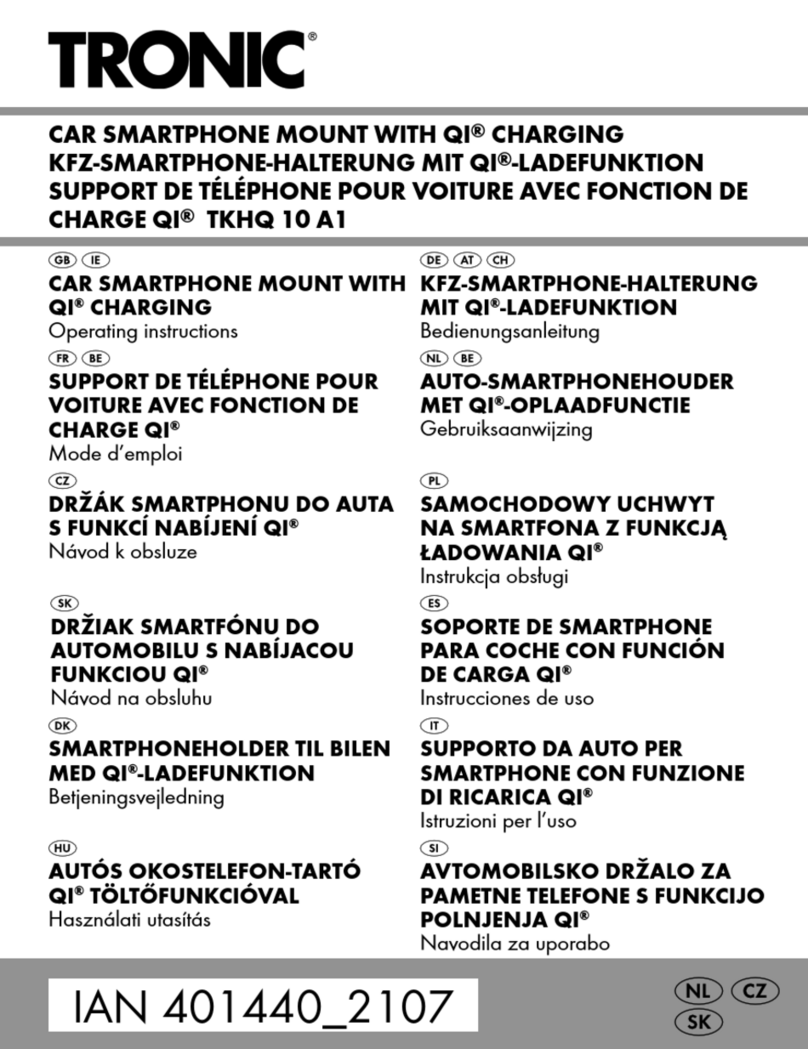
Tronic
Tronic TKHQ 10 A1 operating instructions

Fortin
Fortin EVO ONE installation guide
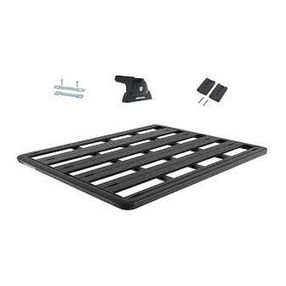
TAUBENREUTHER
TAUBENREUTHER 50-10JT9861 instructions
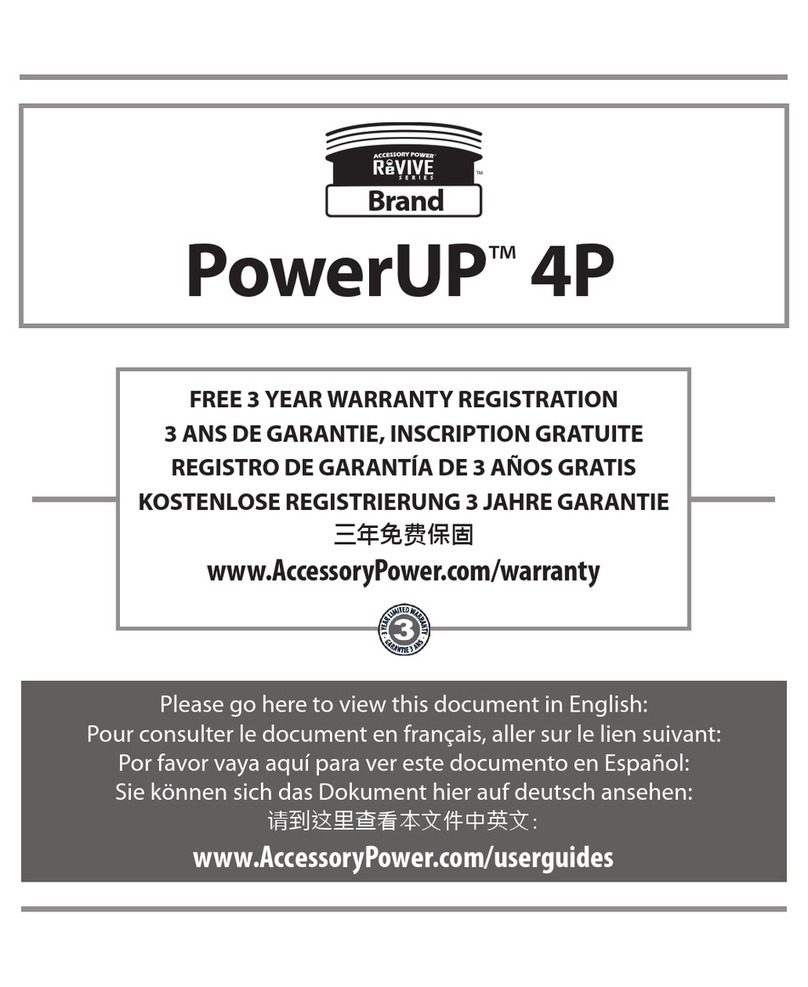
Accessory Power
Accessory Power ReVIVE series quick start guide
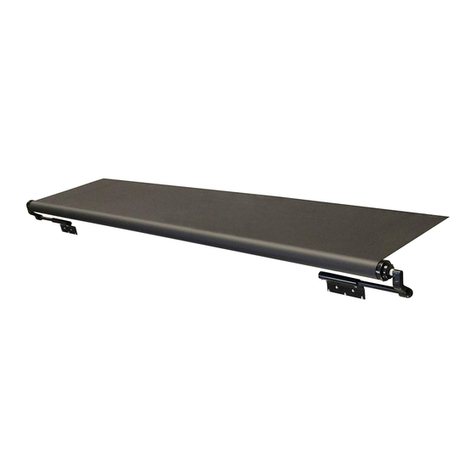
Lippert Components
Lippert Components SOLERA SLIDER installation manual
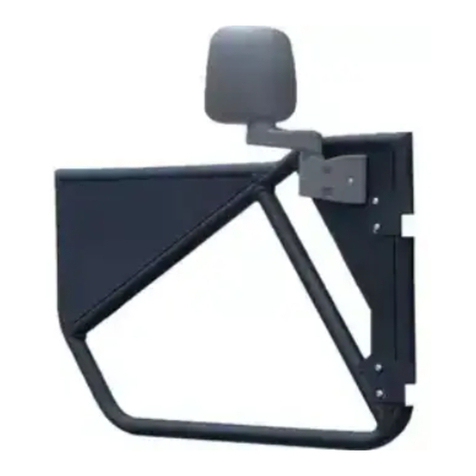
EZTRUNK
EZTRUNK PHANTOM JK Assembly manual


